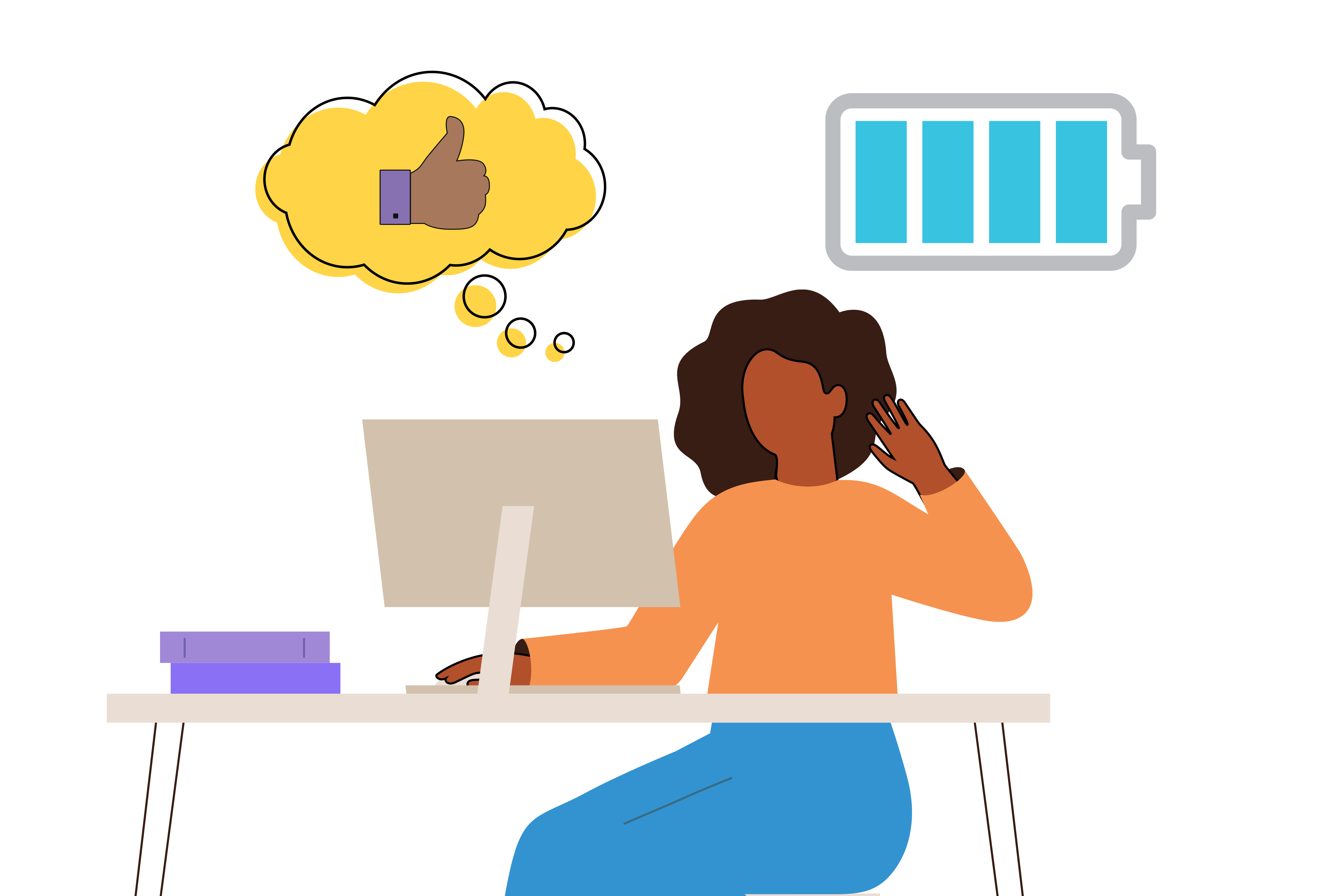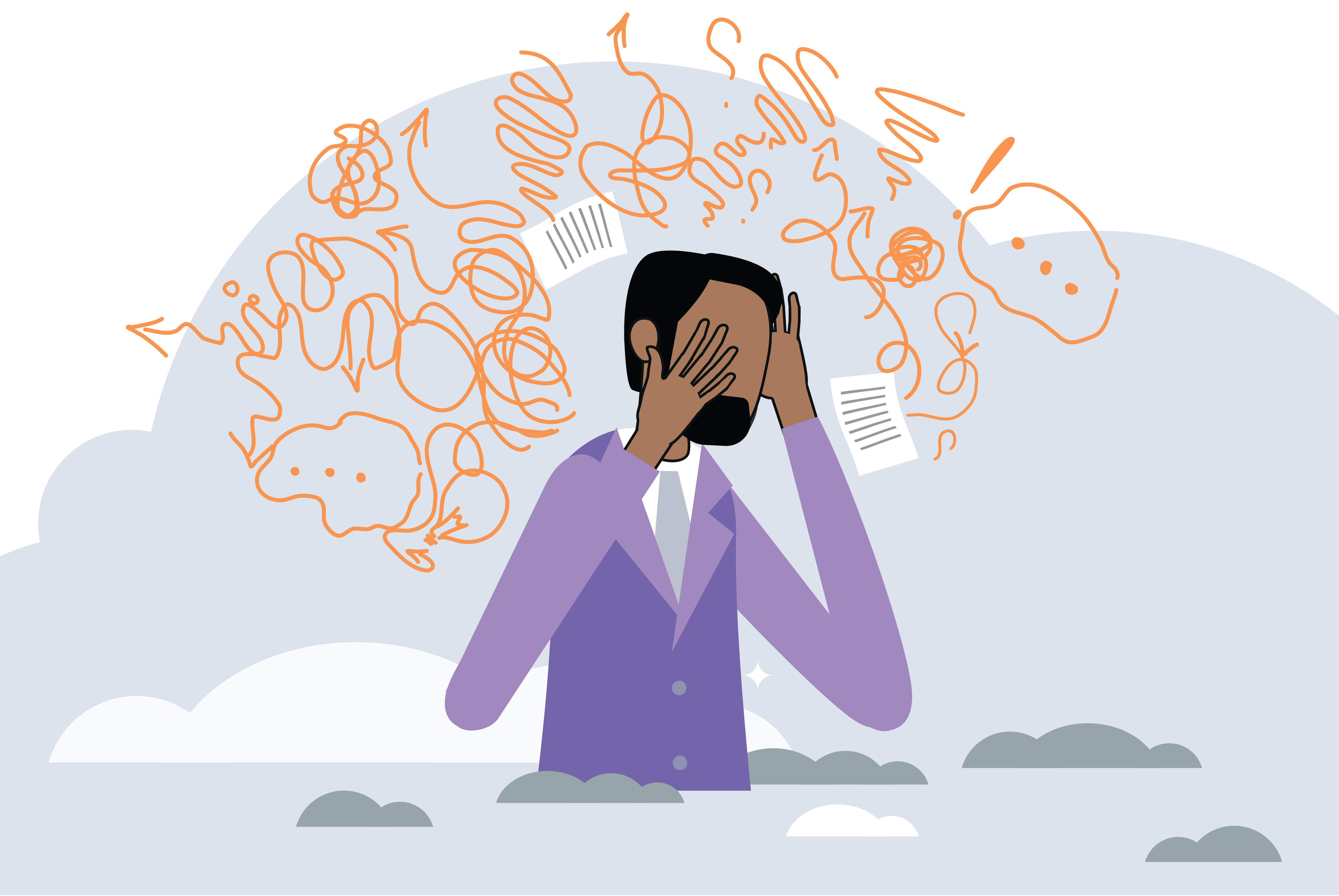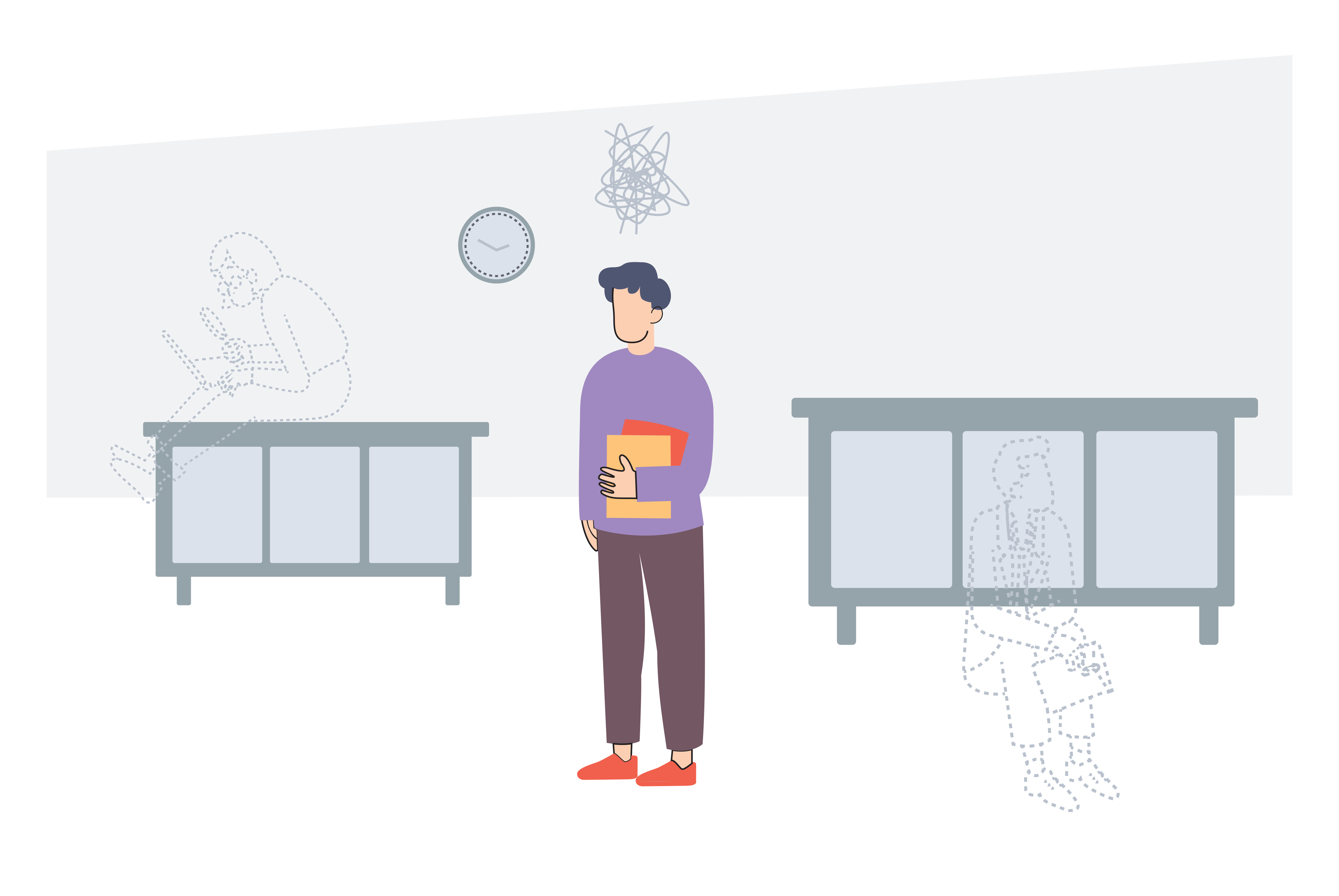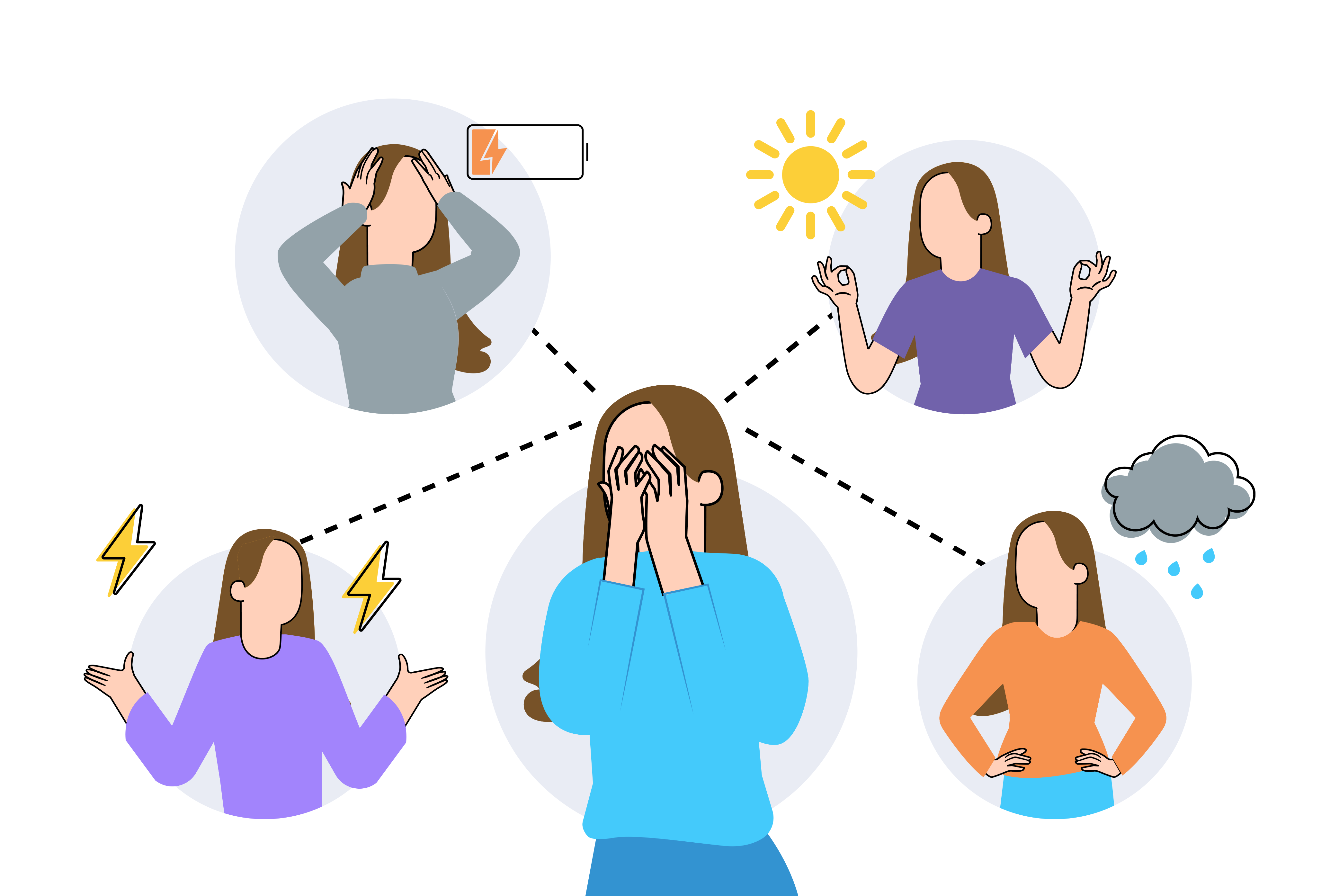The average American adult spends about a third of his or her life at work. While many people have careers that satisfy them or engage their interests, millions of Americans also struggle with poor mental health, impacting their ability to pursue the career or position they actually desire.
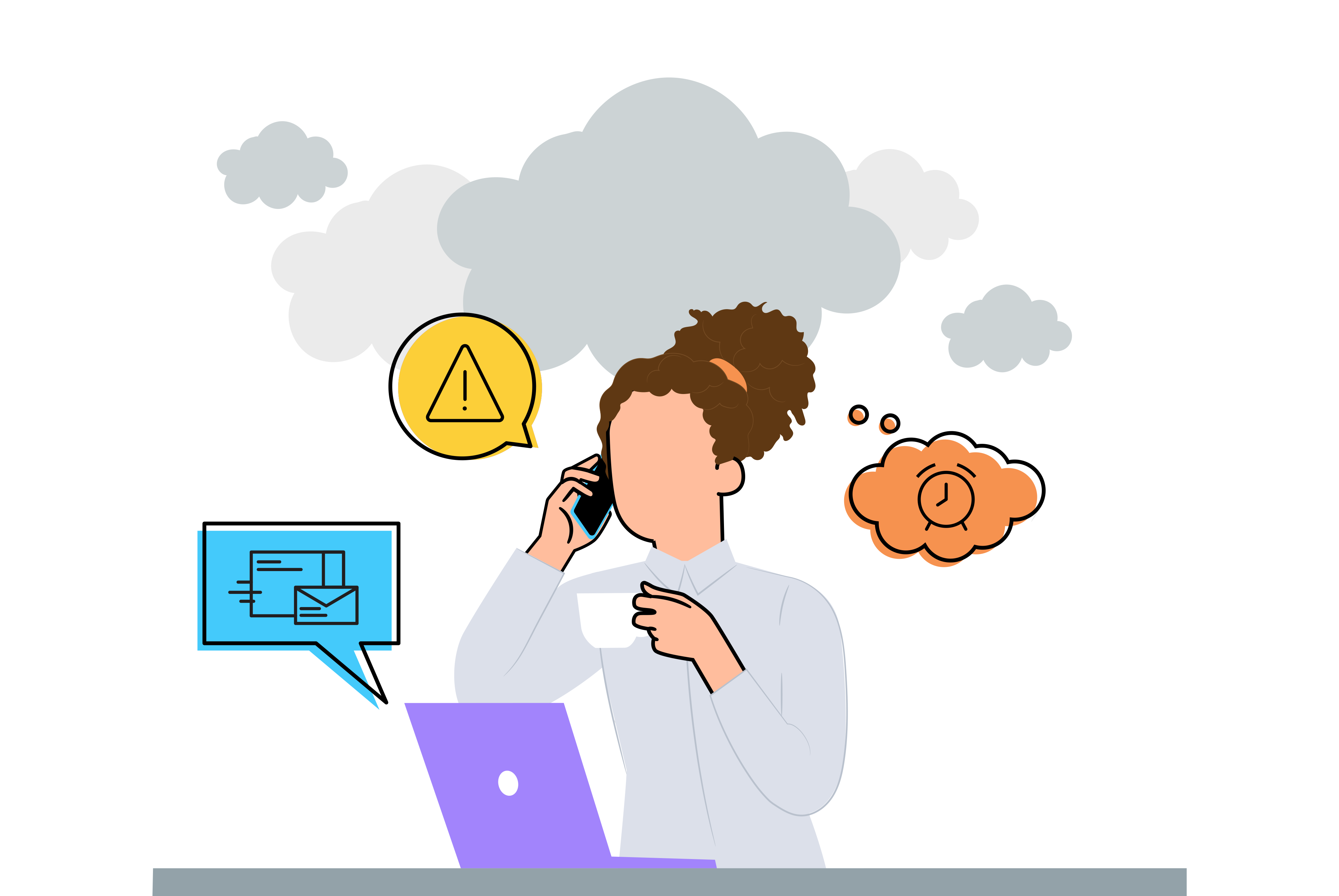
Working and Mental Health: Meaningful Careers or Stressful Jobs?
Most adults between the ages of 25 and 64 have some form of employment.
One in five adults in the United States also struggles with mental illness every year. This, sadly, represents about 18.5% of the population. However, the good news is if you suffer from a mental illness, you are far from alone.
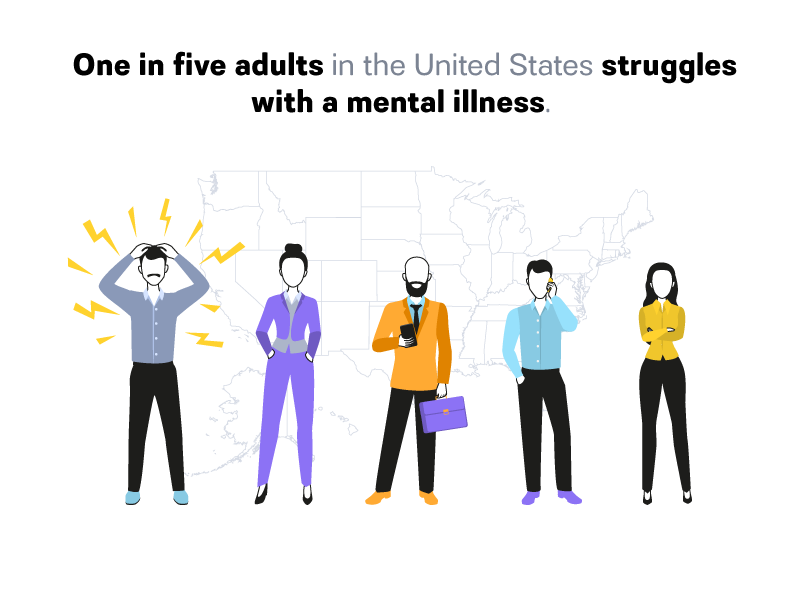
The Centers for Disease Control and Prevention (CDC) found that 71% of adults reported at least one symptom of stress, like a headache or feelings of anxiety, either at work or the lingering effects of work-related stress. Even for someone pursuing a career they feel aligns with their interests, these stressors can have a negative impact on mental health.
Since poor mental health among employees costs businesses between $80 to $100 billion in lost revenue every year, it’s important for employers to understand the most common mental health struggles among American adults, and how they can offer help.
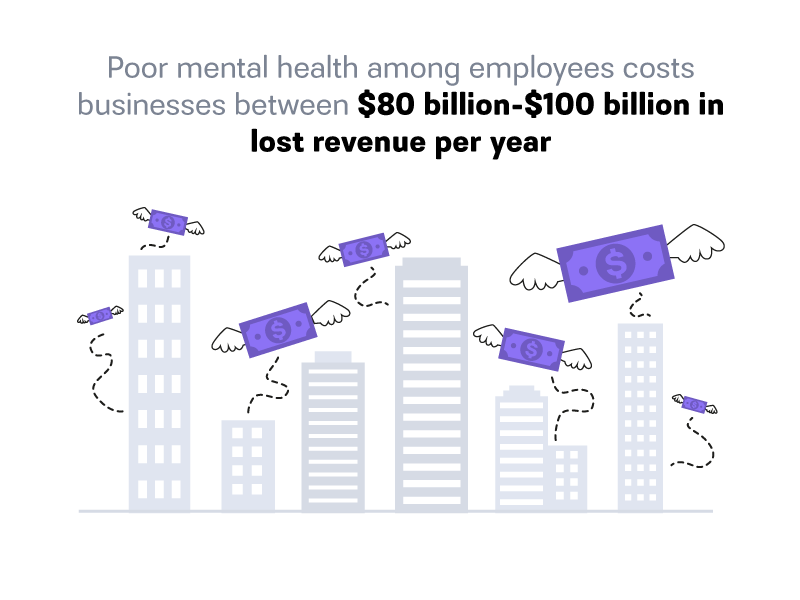
Employees should also understand how their job might impact their mental health so they can seek help.
The Most Common Mental Health Conditions That Impact Job Choice and Performance
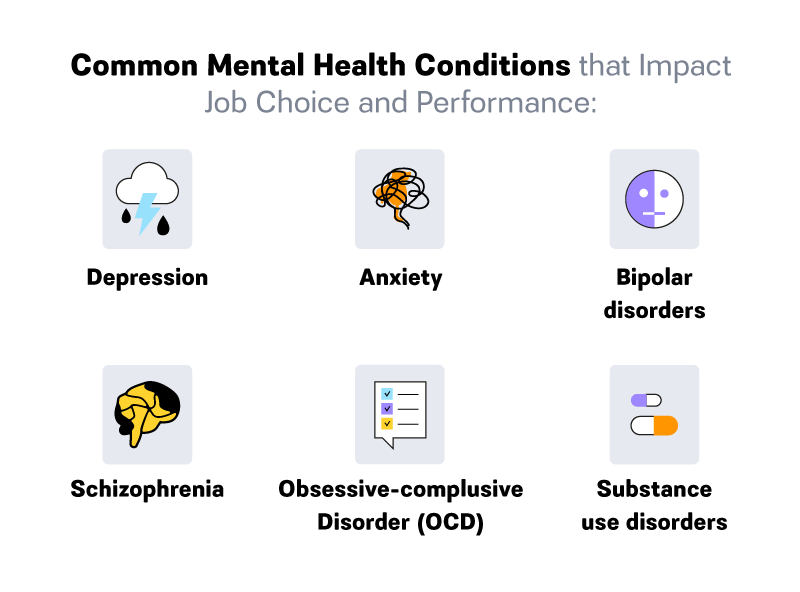
Poor physical health and physical disabilities are important parts of the discussion about creating a healthy workplace. Accommodating employees who have or develop chronic physical conditions, making spaces accessible for those with physical handicaps, and offering support and resources are all part of legislation through the Americans with Disabilities Act (ADA).
The ADA also requires businesses to help employees who have psychiatric disabilities because employers cannot discriminate against those with mental health issues or changing mental health.
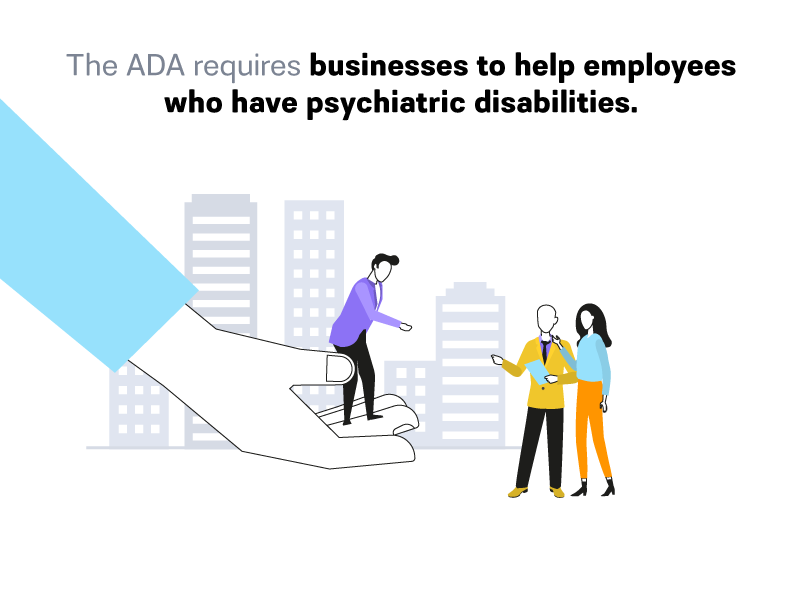
The discussion around mental health in the workplace is changing, and many companies take employee requests to accommodate their psychiatric well-being seriously. However, many adults may struggle to recognize the signs of changing mental health or understand when they need additional help.
To understand how mental health struggles can impact both job and life satisfaction, it’s important to know which mental health conditions are the most common. 61% of workers said their productivity was affected by poor mental health, and 37% said their work environment contributed to their symptoms.
According to the CDC, these are the top six workplace mental health issues.
Depression
Both clinical depression and major depressive disorder are the most common forms of depression.
General symptoms of depression include low physical energy, inability to enjoy otherwise fun or pleasurable activities, changes in sleep and eating habits, fatigue, sadness, anger and irritability, hopelessness or pessimism, restlessness and having trouble staying still or focused on a task, and physical aches and pains. These are just a few symptoms, and many people who have depression experience only some of the symptoms at one time.
To be diagnosed with depression, a person must experience some symptoms consistently for at least two weeks without relief. Sometimes, there are very few symptoms present to indicate depression, but they are enough to be distressing or cause challenges with working or everyday life. The symptoms in people who have depression and are receiving treatment can change over time.
Risk factors for depression include:
- Personal or family history of depression
- Major life changes, trauma, or stress
- Physical illness or changes in medication
In addition to clinical depression and major depressive disorder (MDD), there are other types of depression:
- Persistent depressive disorder/dysthymia: This is a persistent depressed mood that lasts for at least two years. People with this condition may have periods of more severe depression, indicating MDD, followed by less severe symptoms, but there is a little abatement in the major symptoms.
- Seasonal affective disorder (SAD): Mood can be influenced by daylight. People with SAD typically begin to experience lower mood, inability to experience pleasure, irritability, or sadness as the seasons change to winter. However, there are some cases of people experiencing depression symptoms during the summer.
- Postpartum depression: While many new parents experience lower mood in the first few weeks after their child is born, many experience relief from the “baby blues” as they regulate their schedules, get better sleep, and adjust to this major life change. Postpartum depression is a major depressive disorder during pregnancy or up to six months after having a baby. It often affects mothers, but it can impact fathers too.
- Psychotic depression: This is a form of depression that co-occurs with symptoms of psychosis, including delusions (false beliefs) or hallucinations (hearing, seeing, feeling, or tasting something that is not there). Psychotic symptoms often follow the theme of depression and involve delusions of guilt, illness, or poverty.
Among employees, depression reduces their ability to complete physical tasks about 20% of the time and lowers cognitive performance about 35% of the time. About 57% of employees who report moderate depression and 40% who report severe depression get treatment to manage these symptoms.
Industries with the highest rates of depression include:
- Local/Intercity Passenger Transit
- Real Estate
- Social Services
- Miscellaneous Manufacturing Industries
- Personal Services
- Legal Services
- Environmental Quality/Housing
- Membership Organizations
- Security and Commodity Brokers
Anxiety
Most people feel stressed, overwhelmed, or scared at some point in their life due to work or personal stress. If anxiety does not abate as the source of stress eases or goes away, this could indicate an anxiety disorder. There are two common forms of anxiety:
- Generalized anxiety disorder (GAD): Excessive worry that lasts six months or longer is a major symptom associated with GAD. This worry may cover someone’s health, job, social interactions, and other routine life circumstances. If anxiety does not go away with the source of stress, they may need additional help and support.
Other symptoms of GAD include restlessness, feeling wound up or on edge, being easily fatigued, having trouble concentrating, their mind going blank at random or when asked questions, suffering from muscle tension and joint pain, feeling worried or guilty, and having trouble sleeping. - Panic disorder: This condition involves unexpected, recurrent panic attacks. A panic attack is a period of intense fear, which may be brought on by a known trigger or an unknown cause.
Symptoms of a panic attack can feel like a heart attack. They may include heart palpitations, accelerated heart rate, sweating, trembling or shaking, shortness of breath, feeling like they are choking or being smothered, feelings of impending doom, or feeling out of control.
There are also phobia-related anxiety disorders, including social phobia, that involves fear of being in social situations or humiliating themselves in social situations. Phobic disorders also involve fear of something specific, like water, spiders, or the outdoors.
Risk factors for anxiety disorders include:
- Feeling shy or inhibited socially
- Being exposed to a stressful environment or negative events, especially as a child
- Family history of anxiety disorders or substance abuse
- Some physical health conditions like thyroid problems, heart arrhythmias, too much caffeine, or some prescription medications
About 18% of people have an anxiety disorder, including post-traumatic stress disorder (PTSD), phobias, and GAD. This is the most common mental health condition in the United States. Being in a high-stress environment, whether doing physical labor on a construction site, or mental labor in an office setting, can trigger anxiety disorder symptoms.
People who have high levels of anxiety do well in mentally stimulating careers. With these types of jobs, there is less time to worry because they are focused on the task at hand.
Bipolar Disorders
Bipolar disorder covers four types of mental health conditions that cycle through mania (feeling very energetic) and depression (feeling low-energy, sad, or empty).
- Bipolar I disorder: Manic episodes last about seven days, or the mania is severe enough that the person suffers psychotic symptoms and needs hospitalization. Depressive episodes can occur as well, lasting about two weeks. It is also possible to have depression mixed with some manic symptoms, especially before the first major manic episode.
- Bipolar II disorder: This is characterized by long depressive episodes, but manic episodes are hypomania, so they are lower grade and might appear less severe than with bipolar I. Hypomanic periods may last longer than seven days, which can interfere with a person’s ability to work, focus, or have interpersonal relationships.
- Cyclothymia/cyclothymic disorder: This condition includes periods of hypomania, followed by periods of depression, occurring several times over at least two years. Neither the hypomanic nor depressive episodes meet the clinical definition of mania or depression. Still, they disrupt a person’s life and may cause distress.
- Unspecified bipolar and related disorders: This category covers alternating mania/hypomania and depressive symptoms that do not meet the abovementioned categories.
Depression and anxiety are often managed solely with talk therapy but sometimes require prescription medications. People with bipolar disorder are more likely to need prescription medications to reduce manic or hypomanic episodes and improve depressive symptoms.
About 2.6% of workers in the U.S. have bipolar disorders. Bipolar disorders are often misdiagnosed as depression since this will be the major mood change until a manic or hypomanic episode occurs.
People who have any type of bipolar disorder may need to have a regular, predictable schedule, so shift work, self-employment or contract work, or work involving frequent travel may not be ideal. Low-stress jobs with reduced stimuli also can work well for those with bipolar disorders.
Schizophrenia
This chronic and serious mental health disorder affects how people think, feel, and behave due to changes in how they experience and understand reality. This condition is not as common as other mental health conditions. Still, the symptoms greatly impact people’s ability to function, from holding down a job to having interpersonal relationships.
Symptoms of schizophrenia typically present themselves in people aged between 16 and 30, but occasionally, people have been known to develop this condition much earlier or later. Symptoms fall into three categories:
- “Positive” symptoms (behaviors not seen in healthy people), like hallucinations, delusions, agitated body movements, and unusual or dysfunctional thinking patterns.
- “Negative” symptoms (disruptions to normal emotions and behaviors), like reduced pleasure in daily life, trouble beginning or sustaining activities, reduced speaking, and the “flat affect,” which is less facial expression response or tone of voice while speaking.
- Cognitive symptoms, which include trouble with executive function, or the ability to understand information and make informed decisions; trouble with working memory or using the information immediately after learning it; and difficulty focusing or paying attention to tasks.
A combination of genetics, environment, and family history increases the risk of schizophrenia. Psychosocial treatments, including group and individual therapy, help people with schizophrenia recognize symptoms and lead a normal life, but the leading treatment to manage schizophrenia is medication. Antipsychotics are vital to stabilizing brain chemistry, so patients experience fewer symptoms.
About 1% of adults in the workforce have schizophrenia. It is possible to manage the condition for years with a combination of medication and therapy, but someone with schizophrenia may need significant amounts of time away from work to go to inpatient psychiatric treatment and then need a return-to-work program. This reduces the risk of becoming unemployed, transient, or homeless.
People with schizophrenia need work with flexible time on the job, so they can recharge or relax as needed. Contract work and work-from-home positions without much travel can benefit people with schizophrenia. Careers that are high-stress and require a lot of overtime will be bad for their mental health.
Obsessive-Compulsive Disorder (OCD)
This is a common chronic disorder in which people may experience uncontrollable, recurring thoughts or obsessions. They also have behaviors or compulsions that they may associate with obsessive thoughts. People with OCD feel they must repeat these compulsions to ease or stop stress related to obsessive thoughts.
- Obsessions include fear of germs or contamination, unwanted or forbidden thoughts about sex or violence, fear of punishment from religious taboos, fear of accidental harm, fear of intentional harm to oneself or others, aggressive thoughts toward oneself, and needing things to be in a symmetrical order.
- Compulsions include excessive cleaning or hand-washing, needing things arranged in a particular way, repeatedly checking things, and compulsive counting.
People who struggle with OCD may recognize both obsessions and compulsions but cannot control their behavior, or they may not recognize their behavior as abnormal, intrusive, disruptive, or excessive. Genetics, environment, and brain structure are all risk factors for developing OCD. Treatments include a combination of talk therapy and medication, with antidepressants being the most effective approach to improving OCD symptoms.
People who have OCD work best away from the public. They work well on their own with frequent check-ins from managers. Working in retail or public-facing positions can be very detrimental to the health of someone with OCD. Writing or computer programming can be beneficial, especially if these jobs are remote or hybrid.
Substance Use Disorders
While substance abuse is not specifically a mental health condition, abusing substances can increase symptoms of mental illness or be a sign of increasing mental illness. In 2021, 9.2 million American adults had both a substance use disorder and a mental illness.
Abusing substances at work or coming to work inebriated can lead to unsafe conditions for other employees. This is especially true for anyone working with heavy machinery. Truck driving, delivery driving, construction work, and other types of physical labor are much more dangerous if the person is intoxicated.
Although some types of work are more immediately dangerous than others, people who are intoxicated on the job are unsafe regardless of the type of work they do.
How Employers Can Assist Employees with Mental Health Struggles
Whether an employee is managing symptoms with a therapist and medication or they are just beginning to experience symptoms, mental health issues can make simply functioning during the work day much more difficult.
Employers need to know about functional limitations, including psychiatric disabilities or mental illness, as soon as possible to provide reasonable accommodations. This includes training to recognize signs of changing mental health. These signs include:
- Consistent late arrivals or frequent illnesses
- Low morale
- Lack of cooperation or working with colleagues
- Decreased productivity
- Increased accidents or safety violations
- Complaining about pain or tiredness
- Trouble focusing, making decisions, or remembering things
- Making excuses for missed deadlines or poor work performance
- Decreased interest or involvement at work
- Changes to personality over time
- Extreme highs or lows, including very high energy at work
- Confused thinking and grandiose ideas
- Social withdrawal
- Denial of problems and being confrontational when asked about a potential mental health issue
- Heightened anxiety or fear
- Talking or thinking about suicide
- Substance abuse
The Shaw Mind Foundation noted six potential reasonable adjustments employers can make to help their employees, including the ones who struggle with mental illness or might have worsening mental health:
- Changes to employee work hours, such as moving to flex-time contracts.
- Changes to the work location, for instance, providing the option to work from home.
- Moving a workstation to a more suitable environment, like a quieter room.
- Increasing the amount of training and support that is provided.
- Increased flexibility for how breaks are taken, for instance, allowing smaller, more frequent breaks instead of a single lunch hour.
- Increasing the amount of one-on-one contact with the employee.
Employer Assistance Programs (EAPs), health insurance, and paid time off are all important ways employees work with their employers to get the best treatment possible for their mental health conditions. Anyone with a mental health issue can be a great employee if they have reasonable accommodations and actively work to keep themselves healthy and productive. Many of the gigs on Joblist offer people with mental health issues the ability to find jobs that will support them and allow them to grow. Let us help you find a job you love that also prioritizes your mental health!

